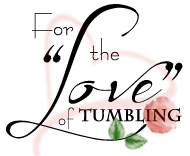Flexibility- Range of movement around a particular joint or set of joints
Stretching- Process of placing particular parts of the body into a position that will lengthen the muscles and soft tissue
Benefits of Stretching
- Improved range of motion
- Increase Power
- Reduced post exercise muscle soreness
- Reduce fatigue
- Improve posture
- Develop body awareness
- Improve coordination/ balance
- Promote circulation
- Increase energy
- Improve relaxation
- Stress relief
- Reduced risk of injury
- Counteract effects of aging
- Helps boost self-esteem
Types of Stretching
- Static Stretching- Just you
- Passive Stretching- With another person or apparatus
- Active Stretching- no aid from external forces
- Proprioceptive Neuromuscular Facilitation (PNF)- push then relax
- Isometric Stretching- Contractions held for a long time – not recommended for children and adolescents
- Ballistic Stretching- Used momentum by rapid swinging, bouncing to force body part past its usual range of motion. ( I feel this is not a good one to use) It may cause injury and does not allow the stretched muscles time to adapt to the position and may create a tight muscle by triggering the stretch reflex over and over again
- Dynamic Stretching- Used controlled, soft bounce or swinging motion to move body part to the limit of its range. It is slow and gentle
- Al- Active Isolated Stretching- This works by contracting the antagonist or opposing muscle group which forces the stretched muscle group to relax. Hold 1-2 seconds – relax- repeat five to ten times
- Just Relaxing- Reposing
- Resistance Stretching- Stretching against someone or something
